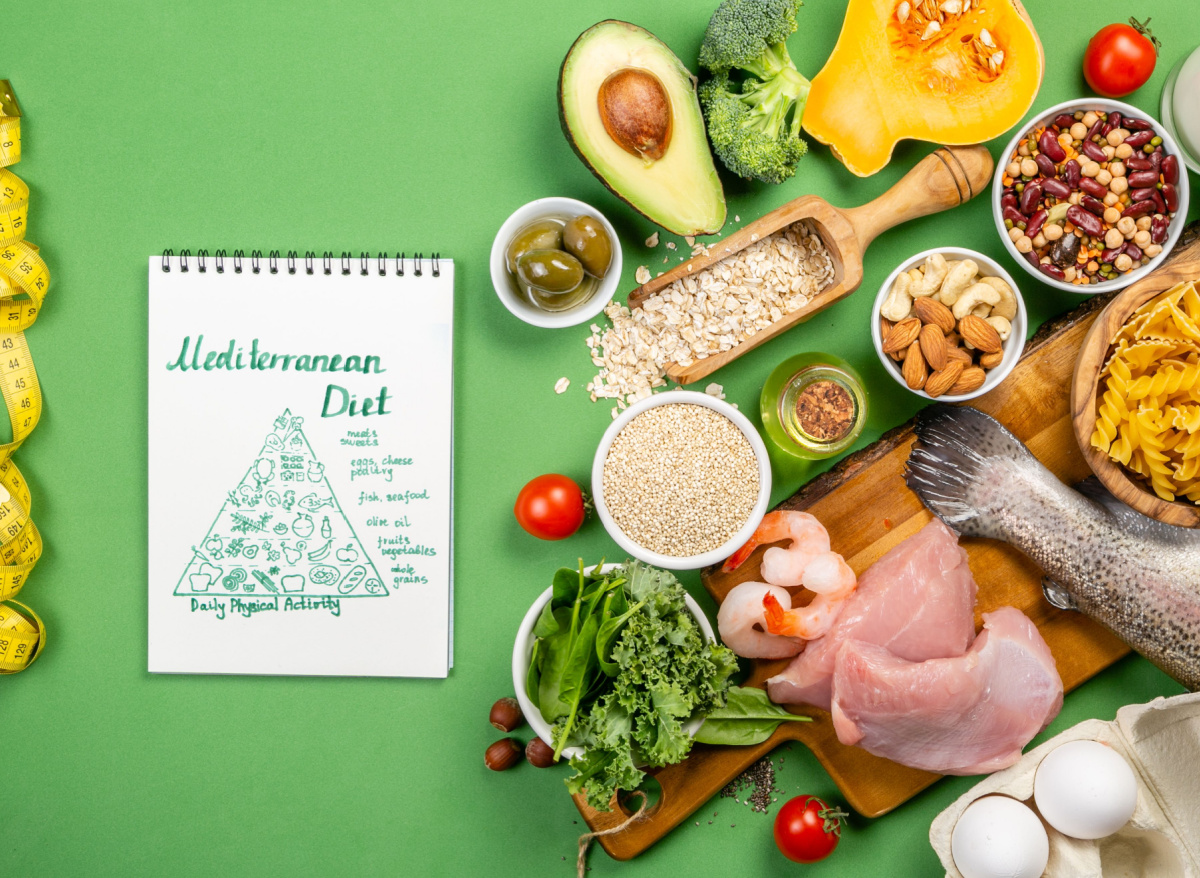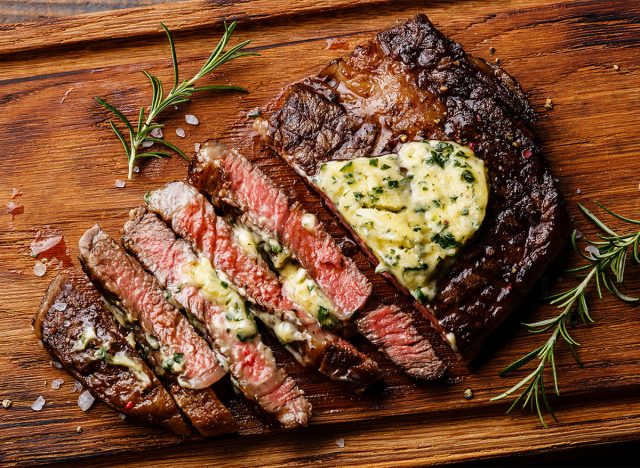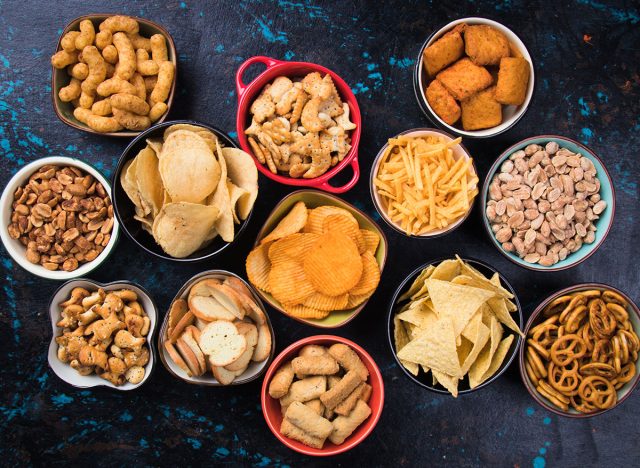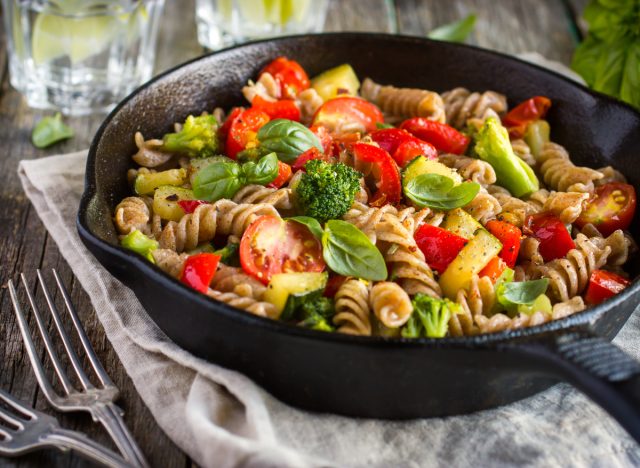6 Common Mistakes You Should Never Make on the Mediterranean Diet, Says Dietitian

For a reported sixth consecutive year in a row, the Mediterranean diet comes in at No. 1 on U.S. News & World Report’s annual ranking of the Best Diets Overall for 2023. This comes as no surprise to me, as I’ve held on to the belief that the Mediterranean diet would continue to grow in popularity and reign supreme in 2023, thanks to its overall variety of well-balanced foods along with its nutritional and health benefits. Some of the guidelines in the Mediterranean diet include using lots of fresh herbs and spices to flavor meals instead of salt, eating fish at least twice a week, eating omega-3 fats from fatty fish like salmon and walnuts, and eating lots of fruits and veggies. The 2020–2025 Dietary Guidelines for Americans promotes the Mediterranean diet as an eating pattern that is healthy and can be used to help lower the risk of chronic diseases. Additionally, several studies have associated the Mediterranean diet with extending life expectancy and lowering the risk of heart disease and cancer. However, adjusting your usual routine to accommodate a new lifestyle change like following a new diet can be challenging for anyone, even if you enjoy everything your new diet may have to offer. Yes, even the top-ranked, widely revered diet Mediterranean diet can leave you vulnerable to making mistakes.
Though those who live near the Mediterranean Sea may have a regional advantage when it comes to adhering to this diet, it’s not an impossible eating regiment to follow while living in the U.S. You just need to be mindful of what foods and eating habits are encouraged by the Mediterranean diet, and which mistakes may be a recipe for failure. There are several pitfalls you should be aware of that can ruin any attempt to eat the Mediterranean way.
To know which Mediterranean diet mistakes to avoid and, in turn, set yourself up for success, here are six ways you can sabotage your efforts to follow this diet. After giving this a read, you can learn more about a different iteration of the Mediterranean diet and its benefits by also checking out The Green Mediterranean Diet Can Help Reduce Even More Visceral Fat, Study Says.
Eating too much saturated fat

The Mediterranean diet promotes healthy fats, which include mono- and polyunsaturated fats. These also include omega-3 fats found in fatty fish like salmon, tuna, and sardines, and plant-based omega-3 sources like walnuts and canola oil. However, the diet minimizes consumption of artery-clogging saturated fats, which are found in foods such as fatty cuts of meat, butter, full-fat ice cream, and the skin of the chicken. Furthermore, the 2020–2025 Dietary Guidelines for Americans recommends no more than 10% of total calories coming from saturated fat, including while following a Mediterranean dietary pattern. Although this means you don’t need to eliminate all saturated fat, not being mindful of the type you choose and amount you consume each day is a Mediterranean diet mistake you’ll want to circumvent to get the health results you seek.
If you want to eat meat, then choose three-ounce portions of leaner cuts that have much less saturated fat. Also, if you want full-fat ice cream, then do so in small amounts on occasion.
Eating too much added sugar

Although the recommendation for added sugar in the 2020–2025 Dietary Guidelines for Americans is no more than 10% of total calories, on the Mediterranean diet, added sugar is not encouraged. That said, similar to saturated fats, you do not need to cut out added sugars completely—rather, you just need to choose wisely where you add it and how much you use.
Much of the added sugar in the U.S. diet comes from sugar-sweetened beverages, so switching to water or seltzer is an easy swap. It also means lowering your intake of baked goods and sweets like cookies, cakes, and candies, which should be limited in your diet anyhow.
Being a couch potato

In the Mediterranean, the weather tends to be warm, which means lots of time for walking, biking, and other forms of exercise. If you’re following this plan in conjunction with the recommendations in the 2020–2025 Dietary Guidelines for Americans, exercise is a must for a healthy lifestyle.
If you can’t get outside to workout, then find indoor activities to get your heart rate up. There are lots of YouTube videos you can move along to, join activities at your local community center, or sign up for a local gym offering a variety of classes and indoor exercise equipment you can use.
Choosing foods high in sodium

Following the Mediterranean diet means putting down that salt shaker (most of the time), and using herbs and spices to flavor your food. If you really need to use salt, then add it after cooking your food and tasting it so you have more control over how much your added and how much you really need!
Eating at your computer

Many folks rush through their meals and eat in front of the computer or electronics they are using. The Mediterranean diet focuses on taking the time to enjoy your food and eating with friends and family. Even if you have a crazy work schedule, just take the time to step away from your laptop and sit on a bench outside with your lunch or if it’s too cold, then sit by the window. Just taking the time to eat mindfully and enjoying your food is a concept this diet encourages.
Large portion sizes

The last thing that can sabotage the Mediterranean diet—really, any weight loss plan—is large portions. Whole grain pasta can be part of a healthy Mediterranean plan, but piling three cups on your plate adds up to several hundred calories alone.
Instead, use reasonable portions and bulk it up by adding lots of veggies and legumes for protein. That way you get more food groups and you’re moderating your portion of pasta.









